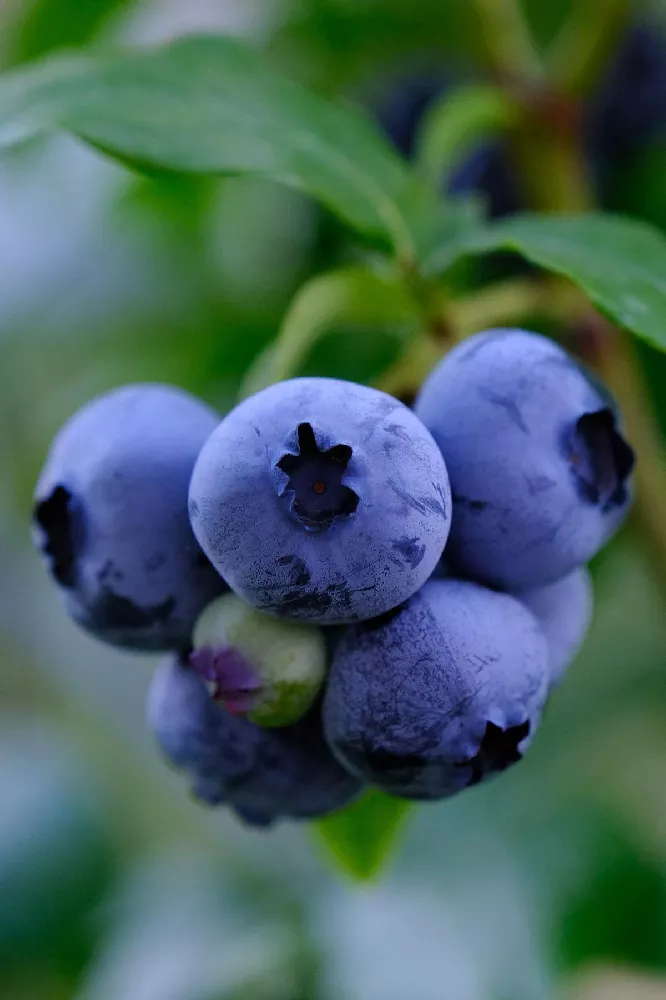- Home >
- Shrubs and Bushes >
- Berry Bushes >
- Legacy Blueberry Bush
Legacy Blueberry Bush for Sale - Buying & Growing Guide
- Ships in 1-2 days
- 1-Year Warranty Eligible
- Pots or accessories are not included unless specified in the product options.
Shipping Details:
Once your order is shipped, you’ll receive an email with a tracking number and estimated delivery date. Most orders ship immediately, but some items are seasonal and may only ship in spring or fall. These products are noted on the website.
You might wonder why the Legacy blueberry bush, a cultivar known as Vaccinium corymbosum 'Legacy,' and the answer is that this blueberry variety is considered to be one of the best tasting in existence. The Legacy blueberry bush is also convenient, as it does not take more than a year or two to begin fruiting. Along with those fantastic fruits, the Legacy blueberry bush also tends to be quite attractive, especially in fall when the leaves transform from green to deep red.
- Fruits arrive in August and taste as good as those of any other blueberry bush.
- The deep red fall color adds seasonal interest
- The Legacy blueberry bush does not take too long to reach a fruiting age.
Plant Care
Sunlight

Grow in full sun exposure for the best results. The Legacy blueberry bush survives in partial shade too.
Watering
Water about once per week. Consider increasing water during fruit development.
Fertilizing

Balanced fertilizers work well. Feed once per year in spring.
Planting and Care
Planting instructions
Much like other blueberry bushes you may be familiar with, the Legacy blueberry bush thrives in acidic soils that have a high volume of organic nutrients. These plants will also grow in both sun and partial shade, but with full sun, they are more likely to produce better harvests. Legacy blueberry bushes grow to be about 6 feet by 6 feet, so be sure to space your plants accordingly if you choose to grow more than one.
Watering and nutrients
You should water your Legacy blueberry bush frequently after planting to ensure successful establishment. Established plants will need about 1 to 3 inches of water per week during the growing season. Often, it is wise to increase your watering frequency during this plant’s fruit development stage, especially since the Legacy variety fruits during the notoriously hot and dry month of August. When fertilizing, be sure to use a blend suitable for acid-loving plants and has ample amounts of each main plant nutrient. Apply that fertilizer once per year in spring.
Pollination
Blueberry bushes typically bloom in May just before the leaves appear. When in bloom, these plants attract insects (mainly bees) which conduct pollination, allowing for fruit development to ensue. Legacy blueberry bushes come with the advantage of being self-fertile. However, as is true for most self-fertile fruiting plants, Legacy blueberry bushes will produce more and tastier fruits when you grow them alongside one or more highbush blueberry shrubs to allow for cross-pollination. Still, with a single plant, you can expect to find plenty of ripe blueberries when pollination is successful.
Pruning
The best time to prune a Legacy blueberry bush is in the early spring, after the last winter frost has passed. When pruning, start by removing any part of the plant that has been damaged or is already dead. After, you can focus on pruning your Legacy blueberry bush into a more advantageous shape. Typically, this involves thinning this plant’s branches to encourage a few main branches to dictate the plant’s overall form. Thinning also helps to encourage airflow, which lessens the odds of moisture-related diseases.
Pests, diseases, and animals
If you are interested in growing a Legacy blueberry bush, then you are well aware of how delicious this plant’s berries can be. Unfortunately, those berries are just as tasty to many types of animals, including birds, rabbits, squirrels, chipmunks, and many more. Along with those threats, Legacy blueberry bushes can contract several diseases, including leaf scorch, rust, blight, leaf spot, and anthracnose. These plants can also experience infestations of aphids, stink bugs, weevils, scale, and more.
Harvesting
Harvesting the fruits of a Legacy blueberry bush is a straightforward task. All you need to do is wait until you notice that the blueberries on your shrub have become entirely blue. When this consistent color arrives, it should be easy to grasp a berry with your fingers and pull gently to remove it from the plant. Repeat this process with each ripe berry. Most blueberry bushes offer a harvest in late spring or summer. The Legacy blueberry bush fruits are ripe somewhat late in the season, with an August harvest time.
Achieving maximum results
Full sunlight is one of a few key factors that will make for better blueberry production. Another of those essential factors is soil acidity. Legacy blueberry bushes love soil with a low pH, so you should amend your soil as needed to meet that acidity need. You should also know that you can grow this plant strictly for its ornamental appeal, as it has lovely fall foliage and a form that works well in hedges.
FAQs
How is a Legacy blueberry bush different from a regular blueberry bush?
How do you make the soil more acidic for blueberry bushes?
One of the first things you should know about caring for blueberry bushes is that these plants need to have acidic soils. Start by testing your soil and seeing if you need to amend it to make it more acidic. If you need to acidify your soil, one of the best ways is to add sulfur or vinegar to your soil. You can also apply a fertilizer that has an acidifying effect on soil.
Is the Legacy blueberry bush cold-hardy?
Legacy blueberry bushes are relatively hardy and can tolerate multiple touches of frost. Generally, the furthest north that you'll find the Legacy blueberry bush growing is in zone 5. However, these plants often show more vigorous growth in lower latitudes, including areas that fall in hardiness zones 6 through 8.
Compare Similar Products
You can't add more Product Name - Product size to the cart.
OK









